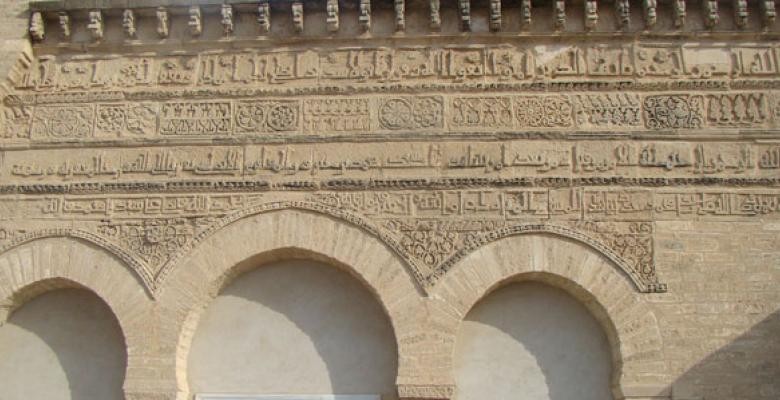Islamic Arts Professor Studies ‘Interaction Zones’ Between Cultures

For Avinoam Shalem the study of art history is not just about locating and defining a civilization, a culture or a movement, it’s about what he calls “interaction zones”— the places where culture and commerce collide and inspire new forms of expression. Forms that may not be best understood through a primary comparison to Western art.
Shalem arrived at Columbia in the fall of 2013 as the Riggio Professor of the History of the Arts of Islam, a field that encompasses monuments and artifacts spanning a huge region from Spain to Indonesia. Aside from its role as visual documentation of mobile societies, Shalem notes, the study of Islamic art raises questions about the uses and meanings of ornament, the role and image of calligraphy and the nature of abstract art.
“If you look at interaction zones like the Silk Road—French and Spanish people moving from west to east, Muslim and Chinese people traveling from east to west—and then look at spaces like Bukhara or Samarkand [both in Uzbekistan], where Europeans were mixing with Asians, exchanging ideas—there’s connectivity,” said Shalem.
That viewpoint makes Shalem a good fit for the Department of Art History and Archaeology. While its teaching is built on the great European art historical methods of interpreting art and archaeology, connoisseurship and iconology, its curriculum has long transcended the geographical and cultural boundaries of the West to encompass the arts around the world. Now, with Shalem’s appointment, the department can better apply those same methods to Islamic art, which comprises work from roughly the seventh century onward. “For a long time, the missing element in our curriculum has been the arts of Islam, which creates meaningful bridges not only between the art and architecture of the Near East, Byzantine Empire and the medieval West, but also between the Arab world and South, Central and East Asia,” said Holger Klein, chair of the department. Shalem’s expertise in these interactions, Klein notes, “adds a particular strength to our department’s Ph.D. program.”
Shalem comes to Columbia after years spent studying and teaching worldwide, including prior posts at the Metropolitan Museum of Art in New York, the Getty Research Center in Los Angeles and a Max Planck fellowship at the Kunsthistorisches Institut in Florence, Italy. One question has followed him throughout his career: How did an Israeli Jew end up becoming a professor of Islamic art?
“To me, it’s quite obvious,” he said. “One of the spaces discussed in Islamic art is the space of the Middle East, and the history of the Jews and the history of Israel are embedded in this space. So I don’t see any reason to separate between the two,” he said, adding that the idea of isolating Jewish history from Semitic history occurred only in the past 60 years. In the 19th century, he noted, “Semitic studies students would study Hebrew and Arabic together, and the history of Judaism and the history of Islam as part of their curricula.”
In a 2012 article published in "The Journal of Art Historiography," Shalem writes that the public generally assumes that all Islamic art is religious. He pleads for art historians to embrace the entire cultural breadth of Muslim societies, not just the religious aspect. A graduate seminar he taught in the fall, “Where Do I Begin? The Genesis of the Arts of Islam,” took up this theme by critically exploring how we’ve formed our current understanding of when exactly Islamic art was born.
Heading into the new academic year, Shalem is involved in a number of projects. For several years he has been working on a series of books on the history of the image of Muhammad in the West. The next volume, "The Image of the Prophet between Ideal and Ideology," which Shalem co-edited, comes out later this year. He is also a director of the Getty-supported "Art, Space and Mobility" project, which seeks to educate a new generation of art historians in thinking globally about art.
This fall, Shalem will offer “In Front of the Object,” a graduate seminar that will focus on the Islamic galleries at the Metropolitan Museum. Each meeting will be devoted to subjecting a single object to the art historian’s critical gaze—a study that includes the role of a museum itself as an “interactive space” in which the curator’s part in choosing and authenticating art objects turns them into masterpieces and icons that respond to the particular cultural demands of our modern societies and illuminate our shared visual history.